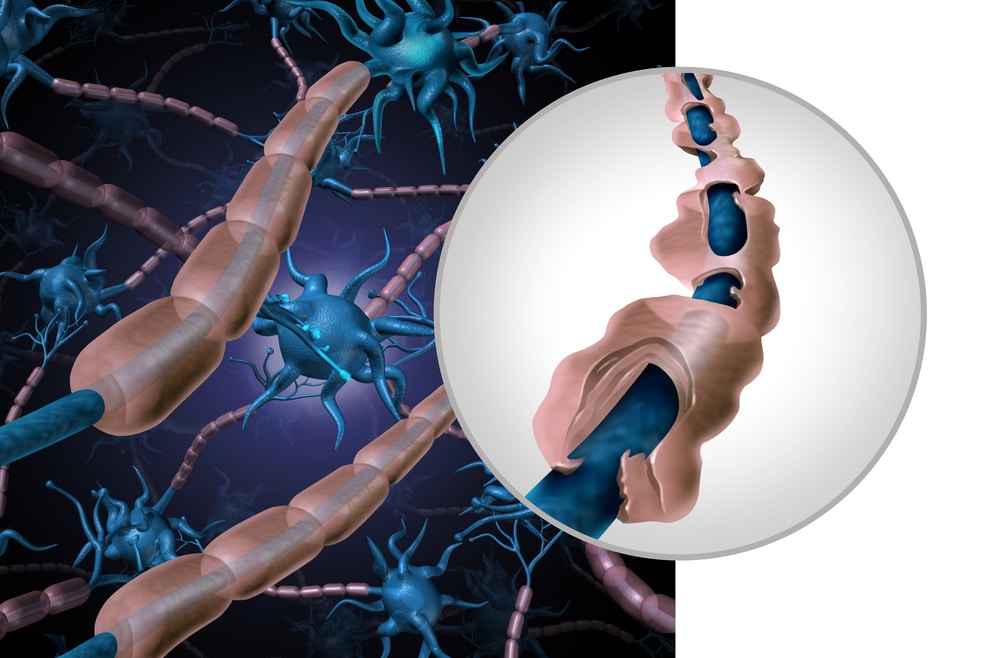Nearly one million people are living with multiple sclerosis (MS) in the United States. This debilitating condition results from damage to the nerve fibers in the central nervous system, causing symptoms including fatigue, difficulties with walking or movement, spasticity, and cognitive changes. But Science Daily reports that recent research from the University of Alberta could change everything, thanks to a mouse model and a new understanding of a molecule called fractalkine. Read on to find out more about the implications of this study for individuals with MS and similar conditions.

What Causes Multiple Sclerosis?
The Mayo Clinic explains that the exact cause of multiple sclerosis remains unknown. MS is considered an autoimmune disease, causing the body’s immune system to attack its own tissues – specifically, the protective fatty substance around the nerve fibers in the brain and spinal cord. This substance is called myelin, and experts at the Mayo Clinic compare it to “insulation coating on electrical wires.” When myelin is damaged in the body, the nerve fibers are exposed, meaning that the messages that travel along that nerve fiber “may be slowed or blocked.” Think of it like a frayed electrical cord that, once damaged, no longer functions properly. Damage to myelin is the driving factor behind MS symptoms. Similar diseases, like Guillain-Barré syndrome, are also characterized by compromised myelin.
Myelin and Oligodendrocytes
Researchers at the University of Alberta knew one thing to be true: While there are some therapies to help patients manage MS and similar conditions, there are currently no treatments that restore lost myelin, a process known as “myelination.” The research team’s goal was to “kick the myelination process into high gear” to effectively reverse some of the effects of diseases like MS. To accomplish this, the researchers focused on oligodendrocytes, a type of cell in the central and peripheral nervous systems. As explained in the study, which was recently published in Stem Cell Reports, oligodendrocytes are the only brain cells that produce myelin. With that in mind, more oligodendrocytes mean more myelin – and that could help reduce MS symptoms.
Using a Mouse Model of MS
To explore oligodendrocyte acceleration, the University of Alberta researchers used a mouse model of MS. “Especially in humans, replacement of oligodendrocytes is very inefficient,” explained Anastassia Voronova, assistant professor in the Department of Medical Genetics and Canada Research Chair in Neural Stem Cell Biology. “The goal of my lab is to identify molecules that are capable of ‘waking up’ those neural stem cells we all have in our brain to replenish those oligodendrocytes.” Fortunately, the mouse model pointed Voronova’s team in the right direction. The team discovered that fractalkine, a molecule previously thought to have a role only in the immune system, was the answer they sought. As explained in Science Daily, this molecule “noticeably stimulated the transformation of neural stem cells into oligodendrocytes.” Voronova explained that the fractalkine molecule and receptor work together to “elicit a signaling cascade inside of the cell,” essentially fast-tracking the development of oligodendrocytes.
Study Implications
After discovering the unique capabilities of fractalkine, Voronova’s team is now investigating the molecule’s potential remyelination capacity using a different mouse model. With this in mind, Voronova told Science Daily that fractalkine could also be important for future drug development. “Myelin is diminished in a variety of neurodegenerative disorders, which makes the idea of enhancing oligodendrocyte production, and therefore repair of the myelin, so exciting,” the researcher said.
_____
Thanks to a broadened understanding of fractalkine, Voronova’s team could be close to a groundbreaking new treatment for MS and similar diseases. Once again, mouse models inform researchers’ understanding of human disease.
Scantox is a part of Scantox, a GLP/GCP-compliant contract research organization (CRO) delivering the highest grade of Discovery, Regulatory Toxicology and CMC/Analytical services since 1977. Scantox focuses on preclinical studies related to central nervous system (CNS) diseases, rare diseases, and mental disorders. With highly predictive disease models available on site and unparalleled preclinical experience, Scantox can handle most CNS drug development needs for biopharmaceutical companies of all sizes. For more information about Scantox, visit www.scantox.com.
